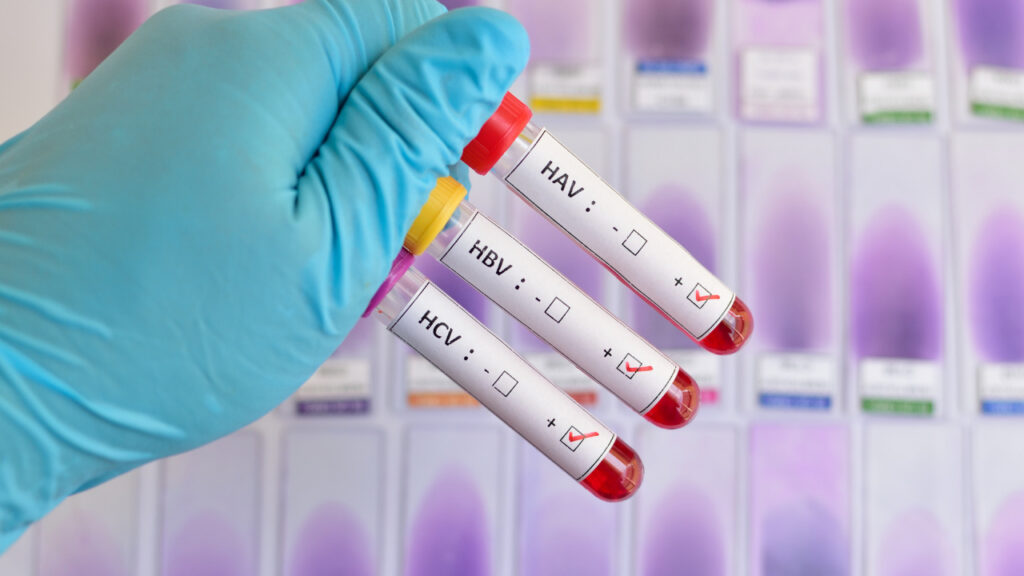‘Viral hepatitis’: Philippines among countries facing ‘silent killer’ disease
Experts cite need to declare emergency

Blood samples testing positive for three (of five) main strains of the hepatitis virus —INQUIRER.net stock image
HO CHI MINH CITY, Vietnam — Countries with a high prevalence of viral hepatitis, including the Philippines, are ured by international medical experts to declare public health emergencies to meet the goal worldwide of eliminating the “silent killer” disease by 2030.
Dr. Saeed Hamid, chair of the Department of Medicine at Aga Khan University in Pakistan, during a forum here on June 20 as part of this year’s Asia-Pacific-International Roche Infectious Diseases Symposium (APAC-IRIDS 2024), said “at the current rate that countries are going, most countries in the Asia-Pacific will not meet the targets by 2030. We need to declare an emergency in all of these high-burden countries,”
“At the current rate that countries are going, most countries in the Asia-Pacific will not meet the targets by 2030. We need to declare an emergency in all of these high-burden countries,” said Dr. Saeed Hamid, chair of the Department of Medicine at Aga Khan University in Pakistan, during a forum here on June 20 as part of this year’s Asia-Pacific-International Roche Infectious Diseases Symposium (APAC-IRIDS 2024).
The country that accounts for the highest number of hepatitis C infections at 8.8 million or 17.8 percent of all cases worldwide is Pakistan.
READ MORE:
PH among 10 nations that logged two-thirds of ‘hepa’ cases in 2022
DOH reports 3,410 new HIV cases in Q1
In its 2024 Global Hepatitis Report, the World Health Organization (WHO) raised the alarm for 38 “focus” countries, which account for nearly 80 percent of viral hepatitis infections and deaths worldwide.
In the Asia-Pacific region, these countries were Bangladesh, India, Indonesia, Myanmar, Thailand, Cambodia, China, Laos, Mongolia, Niue, Philippines, Vanuatu and Vietnam.
Hepatitis is an inflammation of the liver caused by various infectious viruses and noninfectious agents. It can lead to several health problems, some of these fatal.
Hepatitis, Philippines ‘silent killer’ disease
There are five main strains of the hepatitis virus, referred to as types A, B, C, D and E. In particular, hepatitis B and C lead to chronic disease in hundreds of millions of people and together are the most common cause of liver cirrhosis, liver cancer and viral hepatitis-related deaths.
According to WHO, 304 million people worldwide were living with chronic viral hepatitis B and C in 2022, with 1.3 million deaths.
In the Philippines, there were 6.1 million hepatitis cases—5.7 million hepatitis B, and 400,000 hepatitis C—accounting for 2 percent of the worldwide infections in 2022.
A total of 1,045 Filipinos died due to viral hepatitis, or 0.2 percent of the 664,221 deaths recorded in 2022, based on data from the Philippine Statistics Authority.
Cost-effective
“There are many modeling studies that now show that if we tackle this as an emergency, within three years, this effort becomes cost-effective for people, for governments, and within five to seven years, it becomes cost-saving because you save these people from disability and death,” Hamid said.
Coalition for Global Hepatitis Elimination director Dr. John Ward agreed with Hamid, saying that declaring a public health emergency would cause authorities to implement an immediate response, which would avert “a large number of preventable deaths.”
“I also agree that countries respond to emergencies best, and in public health, calling this an emergency would capture the attention that it deserves,” he added.
The WHO report observed that despite better tools for diagnosis and treatment and decreasing product prices, testing and treatment coverage rates for hepatitis have stalled.
Globally, it aims to reduce new viral hepatitis infections by 90 percent and deaths from chronic hepatitis by 65 percent by 2030, from the baseline of 2015. Despite the setbacks, it noted that the goal “should still be achievable, if swift actions are taken now.”
Disclaimer: The comments uploaded on this site do not necessarily represent or reflect the views of management and owner of Cebudailynews. We reserve the right to exclude comments that we deem to be inconsistent with our editorial standards.
